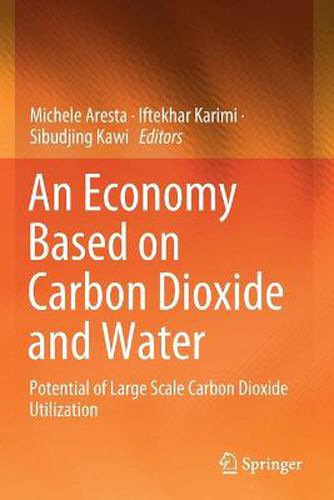Readings Newsletter
Become a Readings Member to make your shopping experience even easier.
Sign in or sign up for free!
You’re not far away from qualifying for FREE standard shipping within Australia
You’ve qualified for FREE standard shipping within Australia
The cart is loading…






This title is printed to order. This book may have been self-published. If so, we cannot guarantee the quality of the content. In the main most books will have gone through the editing process however some may not. We therefore suggest that you be aware of this before ordering this book. If in doubt check either the author or publisher’s details as we are unable to accept any returns unless they are faulty. Please contact us if you have any questions.
This book is devoted to CO2 capture and utilization (CCU) from a green, biotechnological and economic perspective, and presents the potential of, and the bottlenecks and breakthroughs in converting a stable molecule such as CO2 into specialty chemicals and materials or energy-rich compounds.
The use of renewable energy (solar, wind, geothermal, hydro) and non-fossil hydrogen is a must for converting large volumes of CO2 into energy products, and as such, the authors explore and compare the availability of hydrogen from water using these sources with that using oil or methane. Divided into 13 chapters, the book offers an analysis of the conditions under which CO2 utilization is possible, and discusses CO2 capture from concentrated sources and the atmosphere. It also analyzes the technological (non-chemical) uses of CO2, carbonation of basic minerals and industrial sludge, and the microbial-catalytic-electrochemical-photoelectrochemical-plasma conversion of CO2 into chemicals and energy products. Further, the book provides examples of advanced bioelectrochemical syntheses and RuBisCO engineering, as well as a techno-energetic and economic analysis of CCU.
Written by leading international experts, this book offers a unique perspective on the potential of the various technologies discussed, and a vision for a sustainable future. Intended for graduates with a good understanding of chemistry, catalysis, biotechnology, electrochemistry and photochemistry, it particularly appeals to researchers (in academia and industry) and university teachers.
$9.00 standard shipping within Australia
FREE standard shipping within Australia for orders over $100.00
Express & International shipping calculated at checkout
This title is printed to order. This book may have been self-published. If so, we cannot guarantee the quality of the content. In the main most books will have gone through the editing process however some may not. We therefore suggest that you be aware of this before ordering this book. If in doubt check either the author or publisher’s details as we are unable to accept any returns unless they are faulty. Please contact us if you have any questions.
This book is devoted to CO2 capture and utilization (CCU) from a green, biotechnological and economic perspective, and presents the potential of, and the bottlenecks and breakthroughs in converting a stable molecule such as CO2 into specialty chemicals and materials or energy-rich compounds.
The use of renewable energy (solar, wind, geothermal, hydro) and non-fossil hydrogen is a must for converting large volumes of CO2 into energy products, and as such, the authors explore and compare the availability of hydrogen from water using these sources with that using oil or methane. Divided into 13 chapters, the book offers an analysis of the conditions under which CO2 utilization is possible, and discusses CO2 capture from concentrated sources and the atmosphere. It also analyzes the technological (non-chemical) uses of CO2, carbonation of basic minerals and industrial sludge, and the microbial-catalytic-electrochemical-photoelectrochemical-plasma conversion of CO2 into chemicals and energy products. Further, the book provides examples of advanced bioelectrochemical syntheses and RuBisCO engineering, as well as a techno-energetic and economic analysis of CCU.
Written by leading international experts, this book offers a unique perspective on the potential of the various technologies discussed, and a vision for a sustainable future. Intended for graduates with a good understanding of chemistry, catalysis, biotechnology, electrochemistry and photochemistry, it particularly appeals to researchers (in academia and industry) and university teachers.